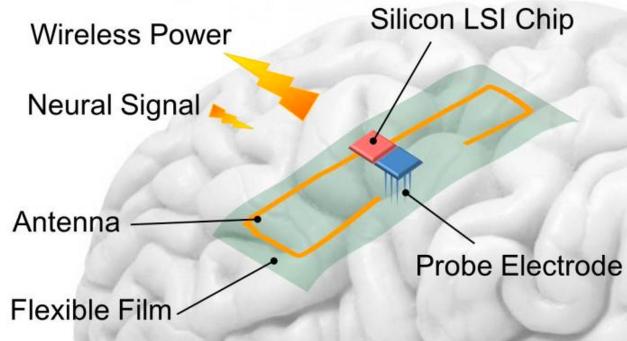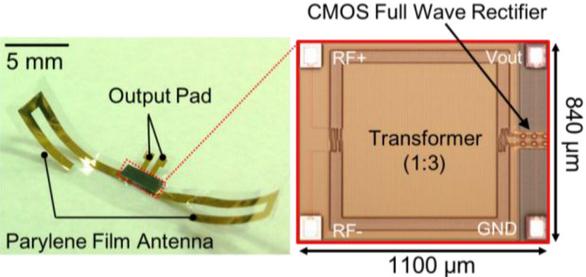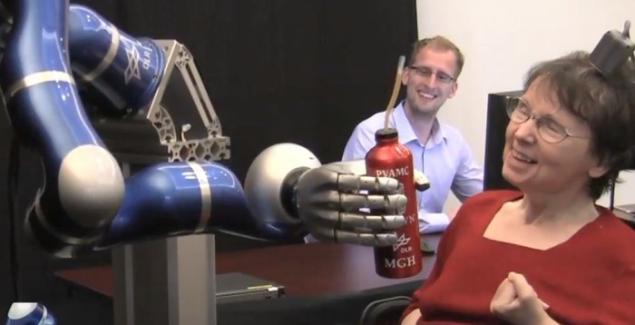651
Japanese wireless device to make power transmission in the brain

At introduction into the brain of various electronic devices have a problem of their power supply. Direct connection of the wires through the hole in the skull - not the best option, because there is a risk of infection and leakage of cerebrospinal fluid. A group of Japanese engineers from Toyohashi University of Technology offers more practical approach, which eliminates these risks and allows the object to move freely even when implanted contacts the brain-computer interface.
Engineers used packaging equipment at wafer to implement a highly integrated circuit (LSI) in the hyperfine parilenovuyu film thickness of 5 micrometers, mount them by Flip Chip . The design of the antenna input on the same parylene and a rectifier to convert the RF signal into a direct current. All this is reminiscent of how the RFID chips.

The total size of the device is 27 x 5 mm, and the flexible film can take the form surface.
Brain-computer interfaces (BCI) will greatly facilitate the lives of people, especially with impaired motor function. For example, in a photo at the bottom of a woman using a BCI controlled mechanical arm robot, which feeds her soda.

Source: geektimes.ru/post/270724/
Against Apple organized a class action because of the "error 53"
15 of the strongest pairs of the XX century























